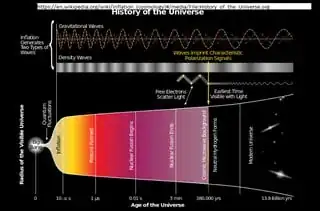My admittedly limited understanding of the big bang is that it was an event that expanded spacetime itself along with the kernel of infinitely dense material that coexisted at the moment of the big bang.
Inflation theory concludes that this expansion of spacetime separated previously adjacent points in space much faster than any particle including a photon could traverse the distance between them.
Another theory states that virtual particle/antiparticle pairs are constantly coming into and out of existence in otherwise empty space. Stephen Hawking declared that a (portion?) of a virtual particle could become real by losing half of its pair to a black hole. Therefore it is possible to transition from virtual to real particles.
My question is; If particle anti-particle pairs can be created from empty space and if the expansion of space occurs at a rate exceeding the rate at which the individual components of the pairs can reconnect then wouldn't both halves of the pair remain real?
If so why wouldn't the inflation be capable of creating the initial mass, rather than simply distributing it? It seems that the combination of Inflation and Quantum Mechanics eliminates the requirement that the universe started with an initial mass. What is wrong with this conclusion?
